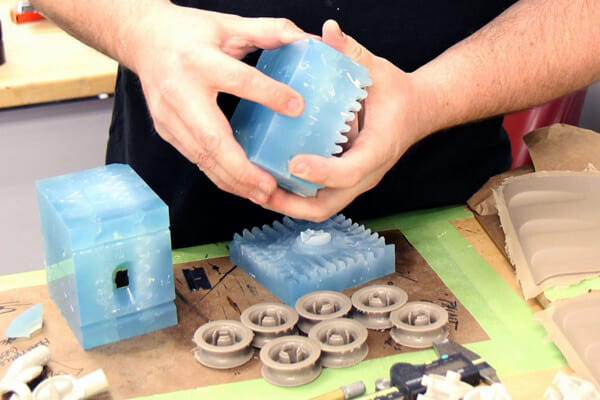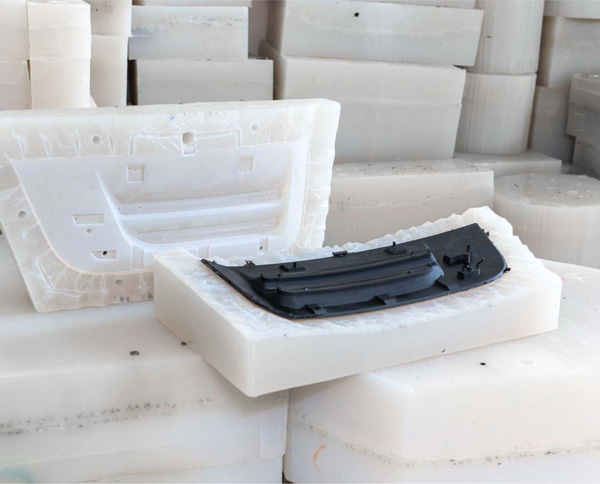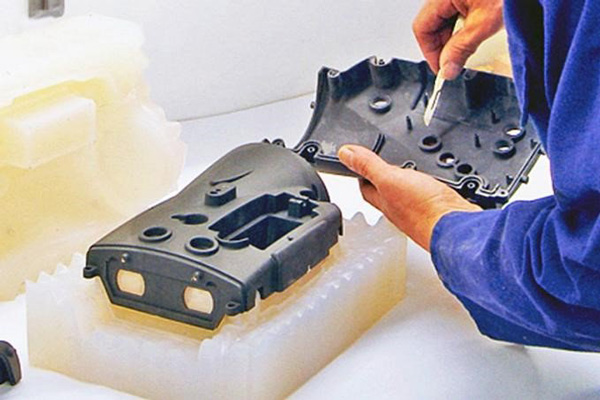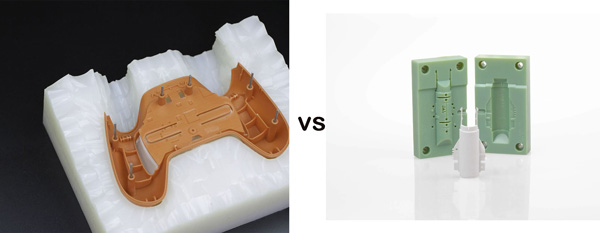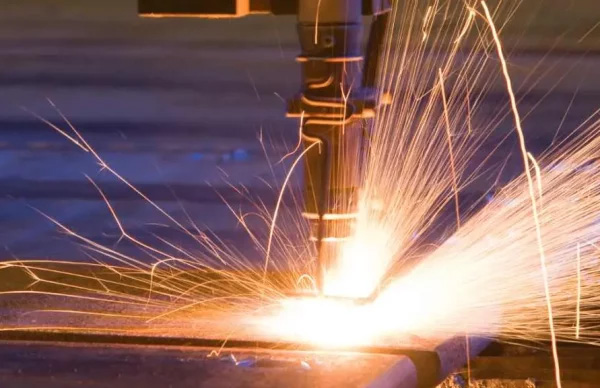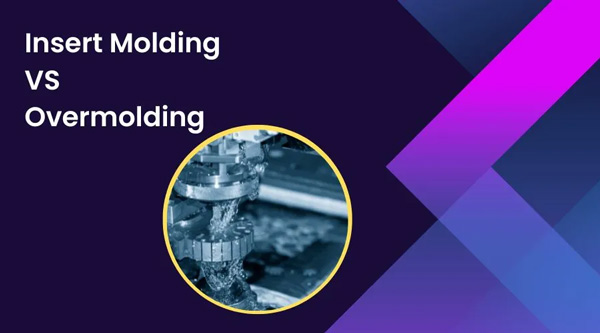If you are struggling to quickly turn your concepts into functional prototypes or models, then all you need to know is what vacuum casting is. Yes! It offers a simple solution due to the high-quality prototypes it produces. No wonder it’s gaining traction in product development! This casting technique makes use of a simplified process, allowing employees to save time and utilize resources efficiently. Read more to learn how this technique can help improve the development of the product!
1) What is Vacuum Casting?
“Vacuum casting is the method of manufacturing advanced prototypes and parts for low production volume runs.”
It can be achieved by first creating a mould from a master pattern—typically a silicone mould. After the mould is prepared, liquid resin will be poured into the mould under vacuum pressure to optimize detail and remove air bubbles.
This method is preferred for agile prototyping and is very useful for parts that will be showcased without the use of expensive traditional tools. It’s commonly utilized when a company needs to evaluate or improve a design before producing it on a larger scale. Moreover, the vacuum casting technique is very useful when fine detail and quality are needed in a part, as it provides smooth surface finishes.
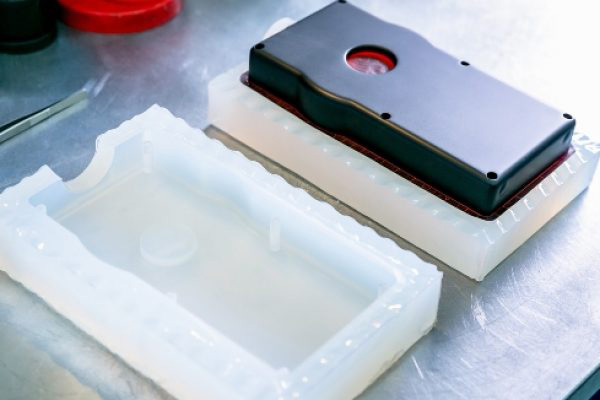
You know in the same way, other materials like rigid, flexible, or rubberlike resins could be used to enhance the properties of the final product. These materials are customizable which gives designers the chance to test different mechanical and aesthetic elements. Well, in this regard, Koonze Model provides vacuum casting services and boasts a wonderful selection of materials and expertise. Our state-of-the-art methods guarantee that the results are precise and smooth, showing that they can be relied upon for any future projects.
2) Pros and Cons of Vacuum Casting
Vacuum casting has its advantages and its disadvantages, as does any method. Overall, the benefits vacuum casting offers in prototyping and low-volume production are remarkable in their versatility and efficiency. In this section, we will discuss six pros and six cons of vacuum casting in particular, so as to provide a balanced perspective.
-
Pros:
High Surface Quality
As with many manufacturing processes, a major focus of vacuum casting is maximizing attention to detail. The vacuuming step, in particular, is adept at removing air bubbles, which helps yield parts with a very fine finish and few, if any, defects. At Koonze Model, we offer a variety of materials and expertise for precision surface finishing or specific material property tailoring. Our team will ensure that you meet your needs for effective vacuum casting services while adhering to production standards.
Low Cost For Small To Medium Production Quantity
Besides having a lower per-unit cost associated with metal moulds, silicone moulds also have cheaper production costs. For this reason, vacuum casting makes for an excellent option for prototyping and conducting small- to medium-scale production runs without incurring large financial losses.
Rapid Prototyping Capabilities
Vacuum casting enables prototyping at a rapid pace. Functional prototypes are usually available within a few days—15 days at maximum—which eliminates time from the design process. With the ability to prototype multiple times, the design cycle can be shortened significantly.
Precision Engineering Parts
With vacuum casting capturing every detail within the mould, the reproduction of fine-detail designs is guaranteed; that’s really appreciating! Well, precision is highly important in the electronics and automotive industries, which makes vacuum casting a necessity in such fields.
Investment that Wouldn’t Break the Bank
For startups, smaller companies, or short-run projects, the cost of vacuum casting will not hurt your pockets. Compared to more conventional methods su,ch as injection moulding, which is associated with large spending on custom metal moulds, vacuum casting is much more economical at the start.
-
Cons:
The life of the mould is Limited
Silicone moulds are only designed for low-volume production, which means the lifespan is limited. Once a certain number of parts are produced with this mould, degradation will force the moulds to undergo renewal, which inevitably brings about more costs.
Restrictions on Size
Vacuum casting is most effective with medium to small-sized parts. While larger parts may be possible, they will most likely require more than one mould, along with other special techniques to create them. At that point, the cost of large-scale production becomes unreasonable.
Straining on Resources
Even though the process is straightforward, it still remains time-consuming. The creation of the moulds, the setup of the vacuum system, and the subsequent pouring of the resin all require careful steps, which can extend the production time.
Quality Variation With Certain Materials
The versatility of materials used in vacuum casting comes with sacrifices. Some resins may not provide the same level of consistency or long-term reliability when it comes to serving in roles like those offered in traditional manufacturing methods.
Ideal for Lower Production Volumes
For mass production, other techniques such as injection or compression moulding may be more suited due to their methods of working. Because silicone moulds eventually degrade, vacuum casting is not ideal for use in high-volume manufacturing.
Small Percentage of Surface Flaws
Some surface imperfections, like tiny air pockets or blemishes, might occur despite the vacuum process’s ability to remove air bubbles. These flaws are usually material and mould-dependent.
3) How Vacuum Casting Works?
What is the vacuum casting process? Not a big deal! With vacuum casting, you can create prototypes of outstanding quality or parts that are needed in small quantities for production. The following is a step-by-step vacuum casting process guide:
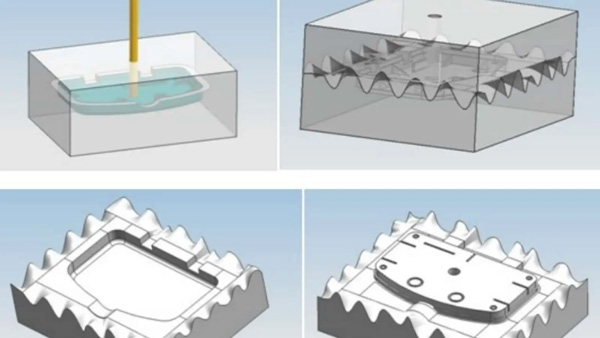
Step 1) Creating the Master Model
A master model of the part is made first using either 3d printing or a CNC machining operation. The model is required to be as accurate as possible because it will be the basis for the mould and directly affect the end product’s quality.
Step 2) Making The Silicone mould
The master model is placed in a container, and liquid silicone is poured around it. The poured silicone softens and takes the shape of the original model after being cured. This process may take 10 to 16 hours for the silicon to set properly. This mould can also be used for production multiple times.
Step 3) Setting Up The Vacuum Chamber
The silicone mould is put in a vacuum chamber, which consists of removing air to create a low-pressure space. This process is useful in getting rid of any air bubbles, ensuring smooth and high-quality parts.
Step 4) Pouring the Resin
The resin of either low or high strength, flexibility, or even UV resistance is suitable depending on the desired end product. The liquid form of resin is carefully poured into the mould to complete the final step.
Step 5) Curing the Resin
The method used for curing resin depends on the material. It can be allowed to cure at room temperature or with the additional application of heat. This step ensures that the resin hardens and enables the part to achieve the desired durability.
Step 6) Finalizing the Part
After the curing process, the silicone mould is taken out, resulting in an accurate replica of the original part. The resin prototype can undergo further processing, like painting or coating to improve its aesthetic appeal and strength. Koonze Model provides expert services in vacuum casting, guaranteeing rapid, precise, and high-quality prototypes while emphasizing durability and detail.
4) Choosing the Right Materials for Vacuum Casting
Choosing the right material for vacuum casting is very important when it comes to achieving the intended physical attributes and capabilities in the vacuum-cast parts. There are six major factors that need meticulous consideration:
- Mechanical Properties
The material selected must exhibit adequate strength, rigidity, and flexibility. If a strong and rigid prototype is needed, rigid resins such as polyurethane should be used. Flexibility calls for the use of rubber-like or silicone resins, which behave like soft materials.
- Surface Finish
A variety of materials have diverse surface finishes. Some resins provide a smooth and shiny finish straight from the mould, while others require additional work to be done afterward. Select a material based on whether a glossy, matte, or textured finish is required.
- Durability and Resistance
Think about how the material will perform with the changes in different conditions. If the part will undergo exposure to heat, wear, or UV light, it is best to go with a more durable resin, such as epoxy or high-temperature resins. These materials ensure the part will maintain its strength over time.
- Aesthetic Requirements
If the appearance of the part is crucial, some materials can be edited to achieve the desired aesthetic goals. Select a resin that can be painted or finished to suit the design, be it smooth or tough.
- Cost and Availability
Depending on unique properties and availability, various materials have different costs. Think about what your budget will allow, along with the production deadline. Some specialty resins may be costly, but their unique properties justify the price.
- Post-Processing Needs
Post-processing involves additional processes that materials may need to undergo, such as painting, coating, or machining, to achieve certain performance and aesthetic goals. It greatly helps when one selects a material that matches the post-processing capabilities and requirements.
Koonze Model offers a variety of materials for vacuum casting a broad variety of workpieces for CNC machining, which makes it easier for you to select the most appropriate one for your project.
| Material Type | Key Feature | Best Use Case |
| ABS-like | Strong and rigid | Functional prototypes |
| PP-like | Flexible and tough | Snap-fit parts |
| PC-like | Transparent and durable | Lighting and display parts |
| Rubber-like | Soft and stretchable | Grips, seals, flexible parts |
| Transparent resins | Clear and smooth | Aesthetic and optical components |
5) Common Applications of Vacuum Casting
Industries that really know what vacuum casting is utilize this technique to produce sophisticated prototypes and parts that require low to medium quantities to be produced. Some of the most important applications of the casting vacuum machine include:
- a) Consumer Electronics
This industry uses vacuum casting for design testing and creating cases or covers that need to be polished and smooth before mass production.
- Smartphone cases
- Speaker enclosures
- Remote control covers
- Vacation
- b) Automotive
Car manufacturers apply this technique for testing the car interior and engine parts. Design teams are able to verify functionality and aesthetics prior to full production.
- Dashboard covers
- Engine covers
- Control knobs
- c) Medical Devices
Vacuum casting assists medical firms in developing preliminary prototypes of safe and precise devices. Testing is done with biocompatible materials, which makes it safe.
- Surgical instruments
- Diagnostic tools
- Devise custom housing test units
- d) Aerospace
Parts in aerospace need to be made of lightweight materials, but sturdy. For rugged, lightweight components that need to be tested in harsh surroundings, vacuum casting is used.
- Brackets
- Cable connectors
- Lightweight housings
- e) Industrial Prototyping
To mitigate risks when developing functional mechanical parts, tools, and models, vacuum casting is employed by product teams and engineers.
- Handles of Machines
- Covers of Machine Tools
- Parts of Fixtures
Vacuum Casts have sleek finishes and high precision. This is the reason the Koonze Model is trusted in the consumer electronics market. Their service is fast, and options are customizable, helping bring designs to life in style and strength.
6) Summary
Okay! We saw that vacuum casting is ideal for low-volume production and rapid prototyping. Moreover, it is widely used across various industries, such as automotive, medical devices, and consumer electronics, because of its precision, cost efficiency, and versatility. With the ability for refinement and testing before full-scale production, businesses will spend less time and money providing high-quality products.
It is important to pick the correct materials and know the vacuum casting procedure for achieving the desired results. Working with a professional like Koonze Model guarantees that your prototypes are beautifully designed and perfectly functional, setting your project up for success. You can contact us right now!

